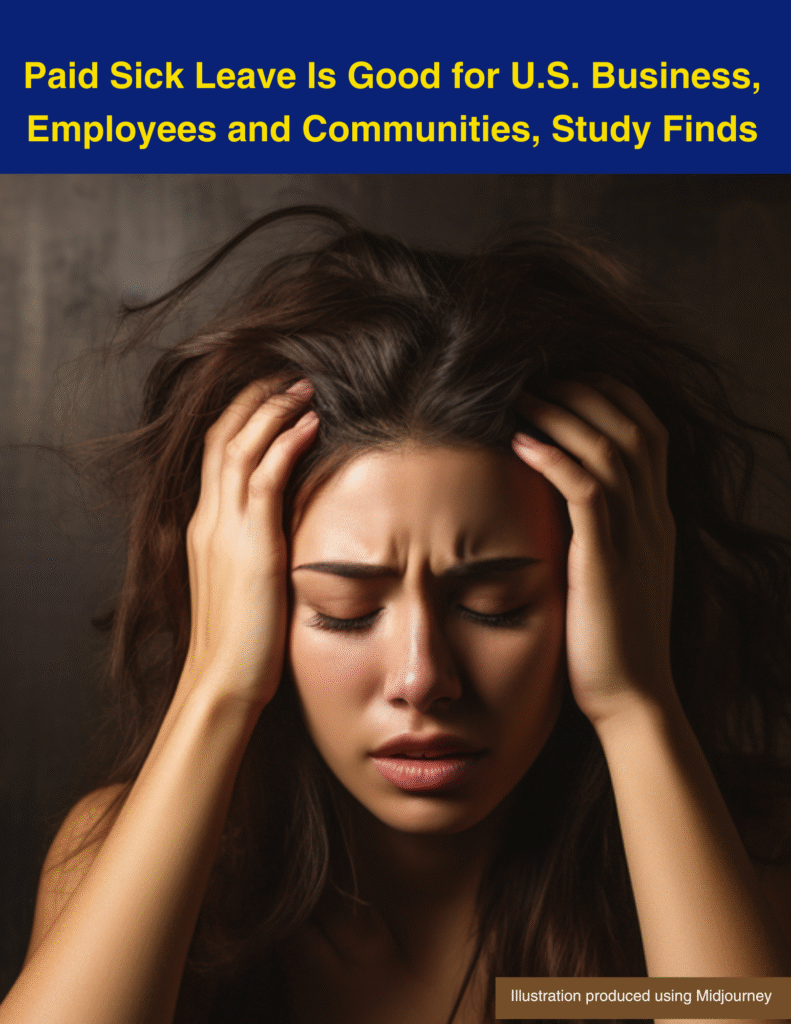
With the exception of a temporary federal law providing paid sick leave to certain employees between March and December 2020, the United States remains one of the few developed countries without federal paid sick leave protection for workers.
In recent years, 14 states have enacted paid sick leave mandates, while 18 states have passed preemptive legislation prohibiting paid sick leave laws, largely due to concerns about the potential negative impact this may have on business.
A new study published in the American Journal of Industrial Medicine by Florida Atlantic University (FAU) and Cleveland State University (CSU) researchers found compelling evidence of significant benefits of paid sick leave to organizations. The researchers systematically reviewed 22 years of research examining the relationship between paid sick leave benefits and short-term and long-term U.S. business outcomes. They took into consideration factors such as business size, industry, and whether or not paid sick leave was required due to a legislative mandate.
Key findings from the study show access to paid sick leave means less occupational injury, spread of contagious disease, presenteeism (the act of workers going to work while ill), and employee death. There was more evidence that paid sick leave was related to favorable business conditions such as employee morale and job satisfaction, improved retention, higher profitability and firm performance, and favorable labor market conditions, compared to evidence supporting negative business consequences, such as worker absence.
“Findings from our study certainly inform voluntary adoption of paid sick leave policies by businesses as well as future legislation,” said LeaAnne DeRigne, PhD, co-author and a professor in FAU’s Phyllis and Harvey Sandler School of Social Work within the College of Social Work and Criminal Justice.
For the study, researchers reviewed the relationship between paid sick leave and correlates of job satisfaction, morale, job commitment, turnover, retention, employee health and safety, occupational injury, presenteeism, absence from work, labor market effects, profitability, productivity and performance.
“Considering the weight that has been given over time to the potential harm of paid sick leave to business, we were surprised to find so little evidence to support this concern,” said Candice Vander Weerdt, PhD, lead author of the study and a faculty member in the College of Business at CSU. “Aside from small increases in worker absence, what we found was actually the opposite, a trove of evidence suggesting paid sick leave is linked with favorable business outcomes.”
Absence from work was the most commonly reported unfavorable outcome of paid sick leave for business; yet findings from the study illuminated the value of having employees stay home when sick. Notably, most of the studies that identified a small but significant increase in work absence associated with paid sick leave also reported a decrease in presenteeism. Presenteeism has been estimated to cost U.S. companies billions of dollars a year in lost productivity and may also impact occupational injuries and spread of disease.
“Although increased absence from work is a serious concern for policy makers in the debate of paid sick leave, our study showed absences from work, while disruptive to business, also may limit the spread of contagious disease in the workplace and thereby lessen presenteeism, reduce occupational injury, and promote a quicker return to optimal employee functioning,” said Patricia Stoddard-Dare, PhD, co-author and a professor in the School of Social Work at CSU.
Considering the benefits available to organizations offering paid sick leave, such as improved job satisfaction, employment retention, better employee health and safety, and improved labor market performance, DeRigne, Vander Weerdt and Stoddard-Dare note that costs associated with increased absences may be largely mitigated.
“Paid sick leave laws have greatly increased access to paid sick leave. While paid sick leave is accessible to 92 percent of Americans earning in the top quartile, only 51 percent of those earning in the lowest quartile have access,” said Vander Weerdt. “These workers are often engaged in food service, hospitality or retail work, meaning they are often on the front lines of our community.”
Researchers found evidence suggesting paid sick leave was associated with lower spread of disease, not only for the workers themselves, but for the entire region where paid sick leave mandates were passed.
“We hope our study findings will help to inform a wide variety of stakeholders and assist them to better prepare for both routine and unexpected health interruptions while safeguarding business well-being,” said Stoddard-Dare.
For the study, researchers utilized the Preferred Reporting Items for Systematic Reviews and Meta-analyses (PRISMA) guidelines to systematically review six research databases between 2000 and November 2022.
This article was adapted from an original story by FAU.
